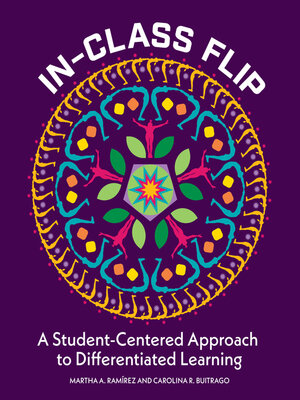
Sign up to save your library
With an OverDrive account, you can save your favorite libraries for at-a-glance information about availability. Find out more about OverDrive accounts.
Find this title in Libby, the library reading app by OverDrive.



Search for a digital library with this title
Title found at these libraries:
| Loading... |
Offers a fresh, research-based approach to the popular flipped learning model, with practical strategies for both experienced practitioners and teachers new to flipped learning.
Written by two passionate teachers who have spent years testing this innovative approach to flipped learning, the book provides practical strategies and examples that support an effective in-class flip. Breaking down the idea of the in-class flip, the authors demonstrate how it differs from traditional flipped learning, and walk teachers through the many possibilities of this new approach, with details on how to implement it successfully from scratch.
In particular, the book highlights how the in-class flip supports differentiation in learning. Freeing up class time for teachers to apply strategies for learning and enabling them to better observe students' learning processes, levels of understanding, interests, preferences and personalities, the in-class flip creates learning spaces and teaching opportunities for differentiation in every lesson. The book explores ways to differentiate learning in terms of access and resources, pace, learning preference, grouping, content, choice, feedback, student support and mastery.
The book:Proposes solutions for a range of scenarios, including non-homework policies, differentiation, student-centered learning, non-tech settings and student-teacher relationships. Identifies and breaks down various configurations for doing station work, depending on each teacher's setup/environment. Shares alternatives to station work, offering flexibility for those working in certain instructional environments where station work may not be feasible. Offers tips for lesson planning, with insights from educators from around the world. Offers detailed planning guidance, with the authors sharing their experiences and techniques for designing an in-class flip.
This accessible guide includes many real-world examples, lesson planning guides and templates, and information about online learning, gamification and other methodologies that in-class flip supports. Educators will discover myriad ideas to use in their classrooms immediately.
Audience: elementary and secondary educators; preservice educators and teacher educators
Written by two passionate teachers who have spent years testing this innovative approach to flipped learning, the book provides practical strategies and examples that support an effective in-class flip. Breaking down the idea of the in-class flip, the authors demonstrate how it differs from traditional flipped learning, and walk teachers through the many possibilities of this new approach, with details on how to implement it successfully from scratch.
In particular, the book highlights how the in-class flip supports differentiation in learning. Freeing up class time for teachers to apply strategies for learning and enabling them to better observe students' learning processes, levels of understanding, interests, preferences and personalities, the in-class flip creates learning spaces and teaching opportunities for differentiation in every lesson. The book explores ways to differentiate learning in terms of access and resources, pace, learning preference, grouping, content, choice, feedback, student support and mastery.
The book:
This accessible guide includes many real-world examples, lesson planning guides and templates, and information about online learning, gamification and other methodologies that in-class flip supports. Educators will discover myriad ideas to use in their classrooms immediately.
Audience: elementary and secondary educators; preservice educators and teacher educators






